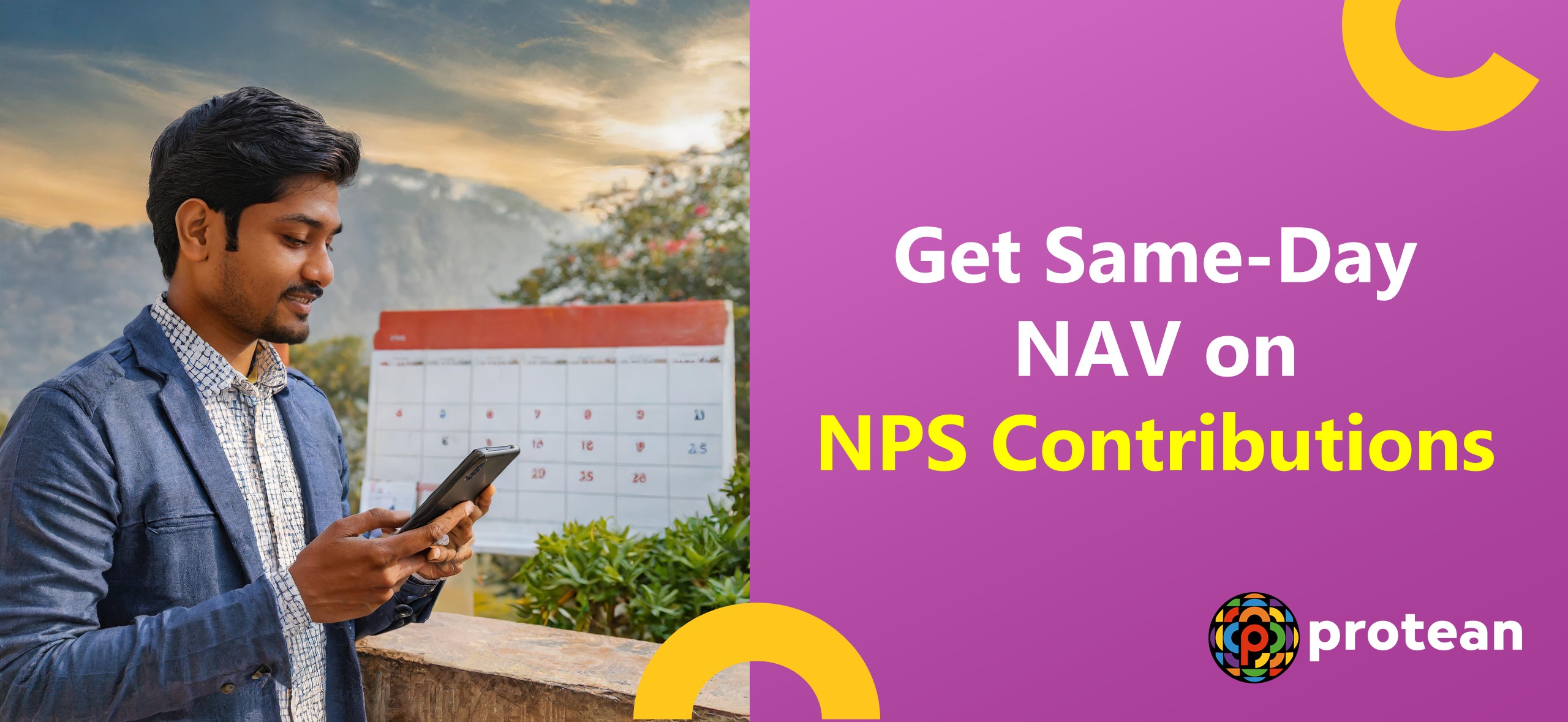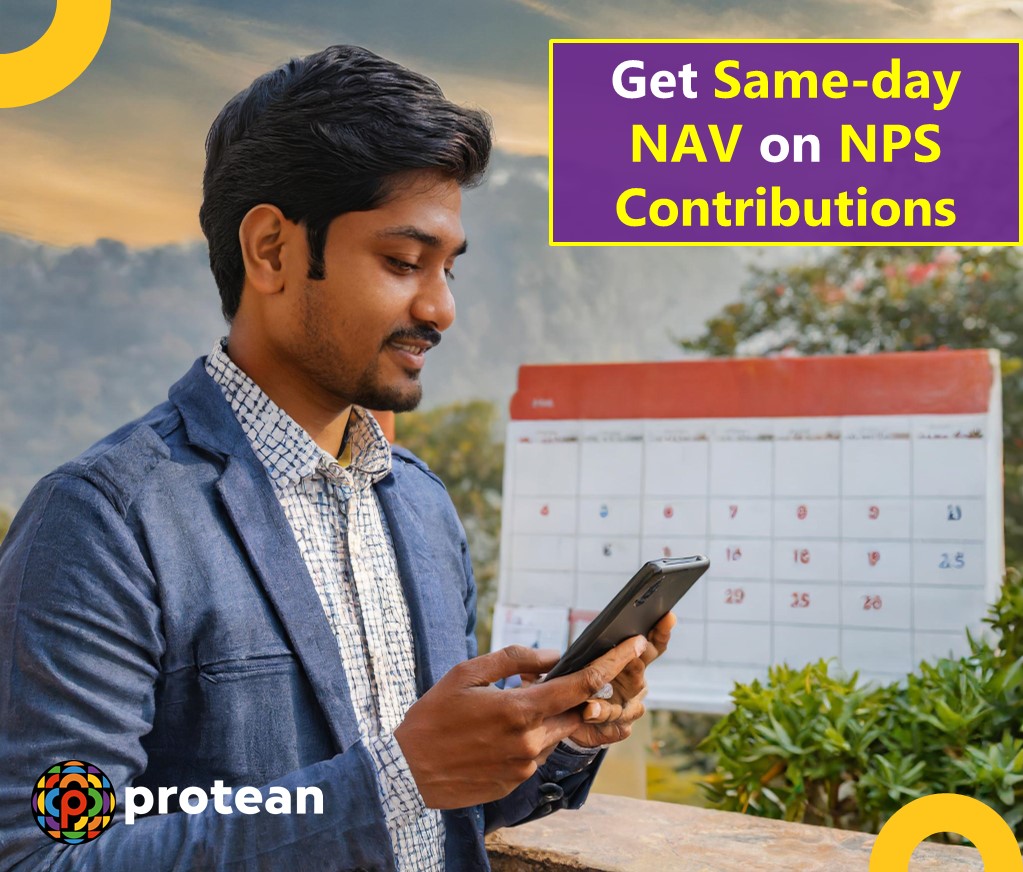Since the introduction of the National Pension System, the subscribers demanded a same-day NAV of their NPS accounts. This is because many people consider NPS as a lucrative investment option rather than a mere pension plan. Since it is a typical feature of all other investment instruments, the unavailability of same-day NAV left subscribers in two minds when investing in NPS.
So, to resolve this dilemma and make NPS a one-stop investment solution for subscribers, same-day NAV was made available. Thus, individuals can strategically contribute both to their Tier-1 and Tier-2 accounts by utilising the D-Remit option. After this inclusion was executed the NPS emerged as an all-round pension product.
To know how the same-day NAV works and the subsequent steps to activate D-Remit, we suggest you continue reading.
What is D-Remit?
D-Remit or Direct Remittance is an electronic system through which money can be directly transferred from your Bank account to the Trustee Bank so that you can get same day NAV for your investment in NPS. Also, it enables the SIP feature from one of your bank accounts.
It has become a popular mode of transaction these days as it makes contributions much more effortless.
To get started with this methodology, first, you need to generate a Virtual ID (Account) with the Trustee Bank. This account cannot be used to make any other transactions other than contributions towards NPS. Also, for all beneficiaries, the minimum SIP amount will be Rs. 500.
Prerequisites of Initiating D-Remit Facility
Your NPS account should pass the following checklist to be eligible for the D-Remit facility:
- The PFRDA must issue a valid Permanent Retirement Account Number against your name
- An active phone number linked to your NPS account
- Net banking facility should be activated with any bank
After you ensure that all the above criteria are met then you can approach the Point of Presence (POP) or the bank where you initially opened the NPS Tier-1 account. There you will need to give a standing instruction to initiate auto payments to your NPS account at set intervals.
An alternative way to achieve the same task is through the Protean platform. The details of this method have been shared below.
Steps to Activate D-Remit Facility on Your NPS Account
Before you learn how to contribute to your NPS account through SIPs, you must know that activating the D-Remit feature does not attract any additional charges.
Having said that, these are the steps to activate Direct Remittance on your NPS:
Step 1: Visit the official website of CRA to create a virtual ID.
Please note that activating the net banking facility with the same bank previously is mandatory to start availing the benefits of D-Remit. Also, as a subscriber, you will be prompted to generate two different virtual IDs if you have both Tier-1 and Tier-2 accounts.
Step 2: Enter the OTP in the appropriate field that will be sent to your phone number. The purpose of this step is to authenticate the newly generated virtual ID. Afterwards, this ID will be permanently linked to your PRAN in the CRA system to facilitate the D-Remit.
Step 3: Now, log in to your net banking account to add the virtual ID under the 'Beneficiaries' section. While making this addition you must mention the Trustee Bank's IFSC details to set up the auto-debit feature voluntarily.
The D-Remit facility can be enjoyed by all NPS subscribers irrespective of whether they are enrolled under the All Citizens, Non-Government or Government model.
How to Use Virtual ID to Transfer Funds Into an NPS Account?
After creating the virtual ID you can sign in to your net banking app to initiate transactions towards the NPS account anytime. The subscribers are allowed to choose either RTGS/ NEFT/ IMPS/ UPI mode of payment to Trustee Banks. To make instant contributions through UPI, Use UPI ID - PFRDA.15DigitVirtualAccount@axisbank where 15 Digit Virtual Account starts with 600101 for Tier I and 600102 for Tier II. UPI handle will be different for Tier I and Tier II accounts.
If one finds manual contributions difficult to remember they can make SIPs via auto-debit. For this D-Remit feature, one should contribute at least Rs.500 for both account types (Tier-1 and Tier-2).
Note: All transactions taking place after 9:30 AM on a given day are reflected on one's NPS account the next day. Otherwise, if a person initiates the transaction before 9:30 AM then they can view the debit statement on the same day.
Benefits of SIP in NPS
The following advantages encourage more people to actively participate in the national pension scheme:
1. SIP in NPS Instils the Regular Habit of Saving for Post-Retirement Age
As you specify the SIP amount and add your virtual ID as a beneficiary, the quoted amount gets credited automatically to your NPS account. This creates a disciplined way of investing without the subscriber needing to put in any extra effort.
2. Handling Contributions is Totally Hassle-free
Once you set up the SIP, unless you feel like making additional voluntary contributions there’s no need to manually pay anyone anything. The PFRDA has set up highly secure technological frameworks to do the job on your behalf.
3. Beneficiaries Can Take Advantage of Rupee Cost Averaging
It is an important aspect that assists any investor to beat the inflation in the market in the long term. When the share prices go down and still your contributions continue to happen without momentary interruptions, the Pension Fund Manager allocates more stock units to your profile. It proves to be crucial in terms of averaging out the savings.
4. NPS Offer Compounding on Investments
If you are aware of the power of compounding then you will be very happy to realise that the same can be achieved through NPS contributions. You keep on earning returns that are earned by investing your past profits. However, to get the compounding benefits you must stay invested for many years.
4. The SIP Can be Stopped Anytime
One can stop SIP investments and continue with manual contributions at any time they want. It won't attract any additional charges.
The exclusive feature of flexibility in stopping Systematic Investment Plans (SIPs) makes NPS a more effective investment option compared to RDs or recurring deposits, as the latter often incur fines for discontinuing automatic payments, subject to varying policies across different banks.
Conclusion
The D-Remit is a recommended way to continue staying invested under the NPS for a long period. It instils the long-term vision and your wealth keeps on growing disregarding the market volatility factors. So, you can consider activating the D-Remit either through standing instructions by visiting the bank or by creating a virtual ID on Protean.
For related assistance on this, feel free to contact customer support at 1800-2100-080.
FAQs
1. What are the prerequisites for setting up SIP under NPS?
Any NPS subscriber can opt for a Systematic Investment Plan or SIP for both their Tier-1 and Tier-2 accounts. However, they must ensure certain criteria are met before they proceed with the SIP registration process.
For instance, if you are aiming to start an SIP under your NPS account then you must confirm the following things:
- Whether your Permanent Retirement Account Number or PRAN is active
- If an updated phone number has been linked to your PRAN for effective communication
- If there is an operational email address that you will have to link to your PRAN
- Also, if the registered bank account from which the money will be deducted has an active net banking facility
Considering all the above conditions are checked, now you can head to the website of any of the POPs offering online services under NPS to start your SIP registration.
2. What is the contribution condition for NPS accounts?
As an NPS subscriber, you should make a minimum contribution of Rs. 1000 per year for a Tier-1 account. During account opening, the initial contribution should be at least Rs. 500. However, there are no upper limits to the maximum contributions made annually. Also, you can control the frequency of deposits throughout the investment tenure.
3. How much monthly pension can you expect from NPS?
The pension amount depends on multiple factors like the frequency of contributions, average returns across your investment timeline, the particular annuity plan chosen, etc. So, if you aren’t familiar with the term ‘annuity’ it is basically a monthly pension scheme that every NPS subscriber has to buy with 40% of the accumulated corpus. In case you wish to receive more pension you can decide to withdraw a lesser lump sum and convert the rest to an annuity subscription.
At present, there are 15 registered Annuity Service Providers (ASPs) in India including SBI Life, LIC, Max Life Insurance, etc. You can compare their overall returns and the performance of different annuity schemes before completing a pension scheme purchase. Also, you can use their online calculators to receive more precise estimates of monthly pension payouts.

